Southwest Michigan field crops update – May 29, 2025
Wheat is mostly in full flower, and some fungicides for Fusarium head blight have gone out. Corn and soybeans continue in early vegetative stages, potatoes are at tuber initiation, and alfalfa had its first cutting.

Weather
Temperatures were warmer than the week before, but the weather was still mostly cool and dry. Mild temperatures will continue until early next week, with a high in the low 90s forecast for next Tuesday, June 3. No precipitation is expected until late next week, when there’s a chance it will arrive in the form of thunderstorms.
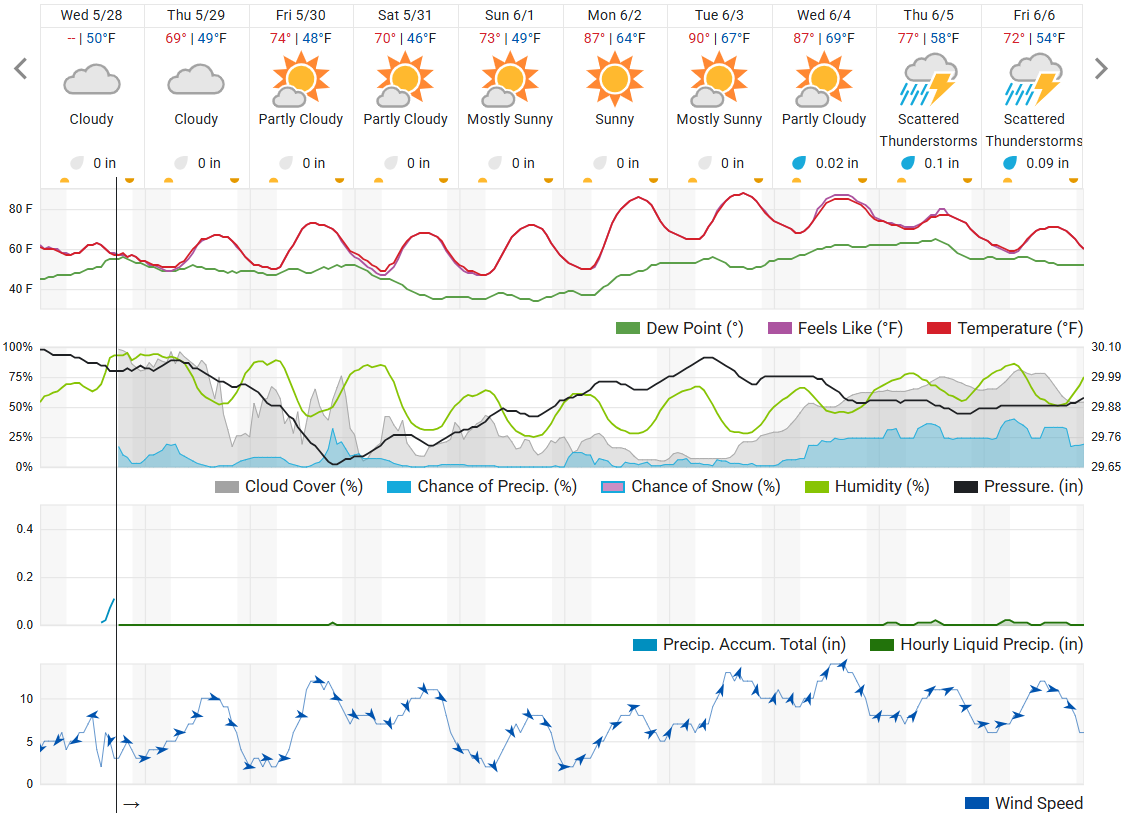
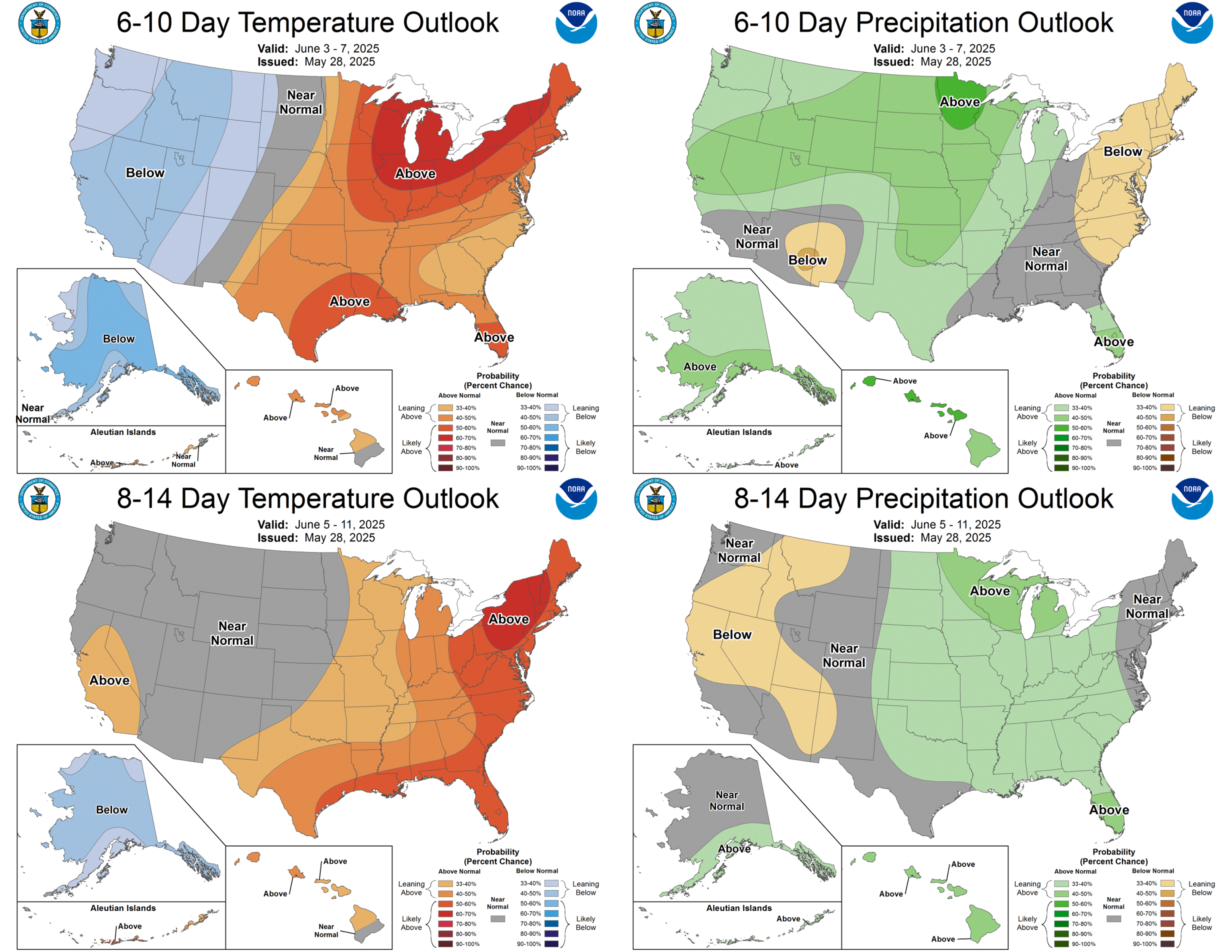
Crops and pests
Soybeans and corn are still being planted and emerging. They are in early vegetative stages. Corn especially is yellow and stunted in many places due to the recent cold weather. Seedcorn maggot was found in some soybean fields. Deer, turkey, geese and other wildlife are starting to feed on newly emerging crops.
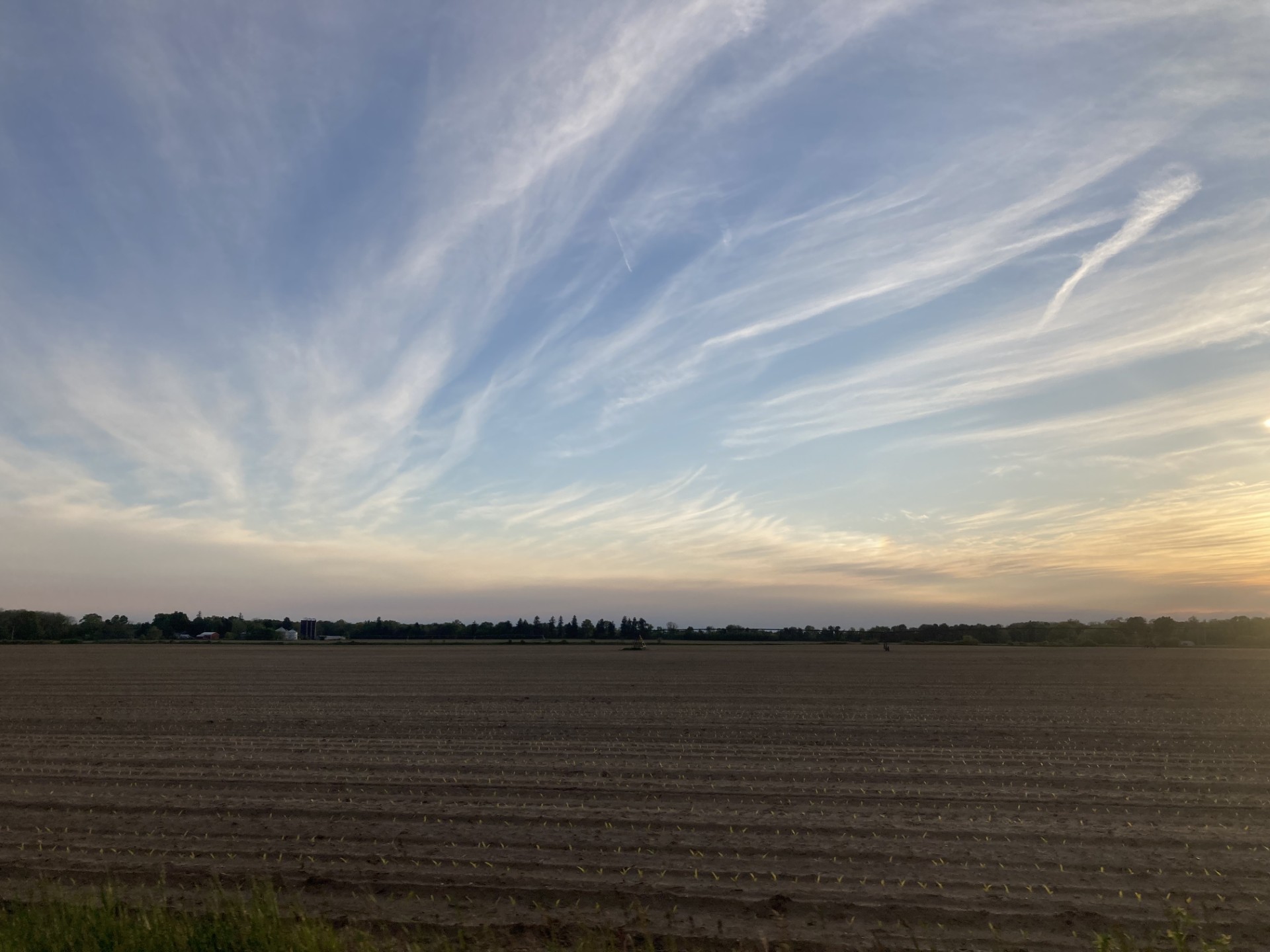
Bucket traps in Berrien (near Berrien Springs), St. Joseph (Centreville) and Van Buren (Lawrence) counties caught the following between April 14, 2025, and May 26, 2025. Moth counts for both true armyworm and black cutworm remained low.
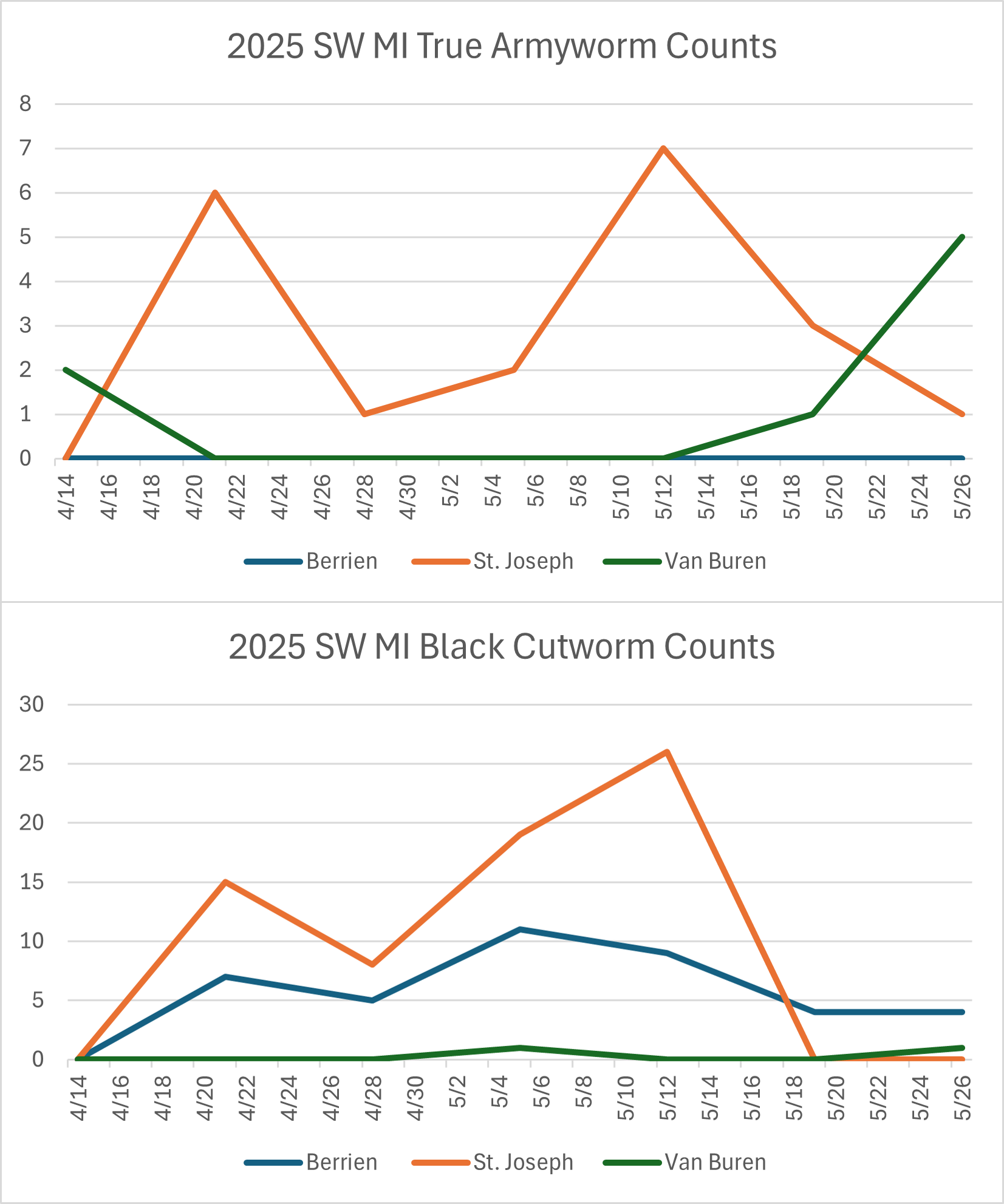
Winter wheat flowering is in full swing. Some varieties have finished flowering. From the start of flower, the fungicide to prevent Fusarium head blight or head scab should be made within three to five days. Some fungicide applications have already gone out.
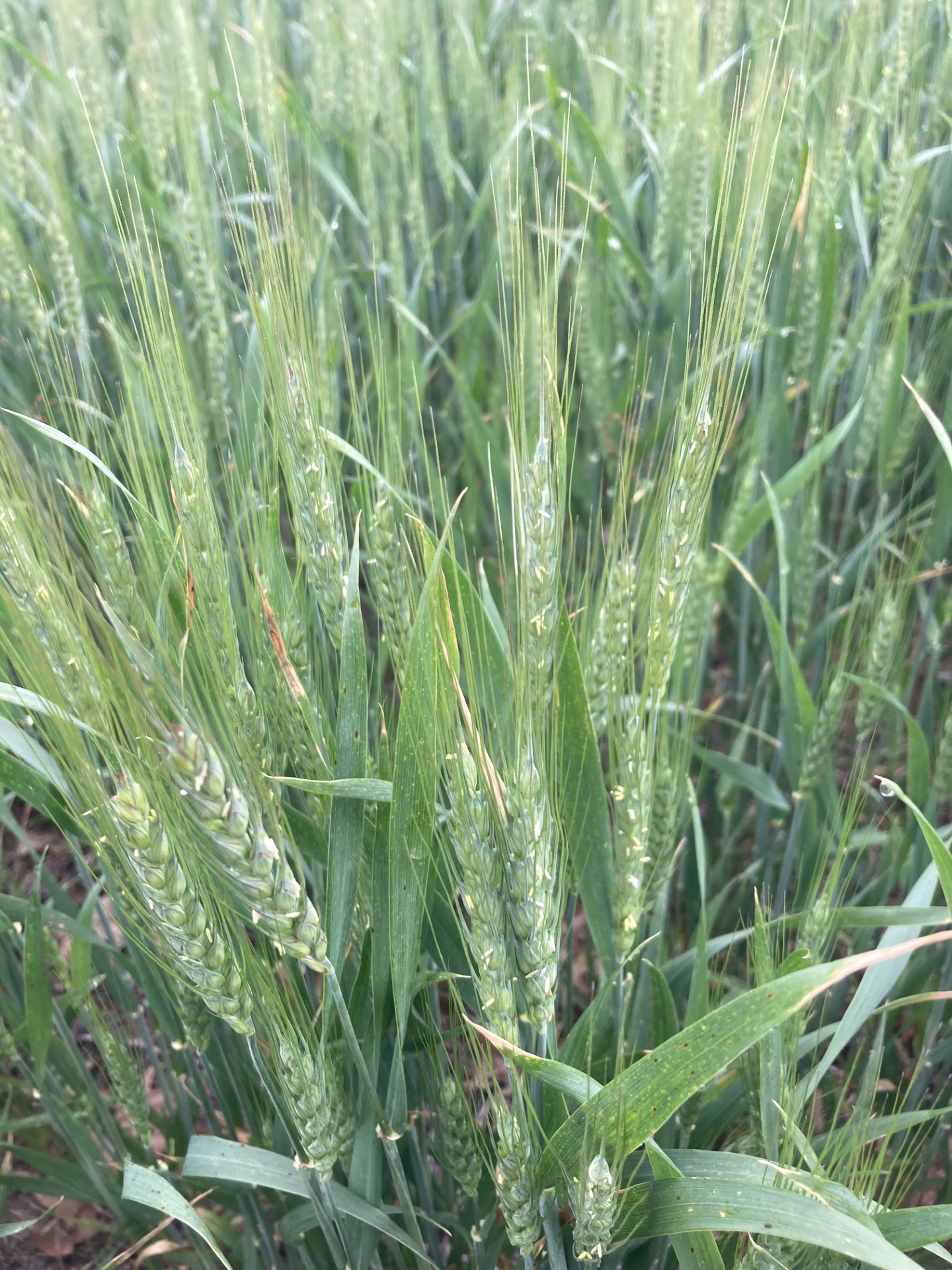
Early potatoes are at tuber initiation, which is a critical period for water uptake. Later planted potatoes are emerging or close to emerging. Nematicide and herbicide applications are going out, and some acres started receiving fungicide applications.
First cutting for alfalfa and alfalfa-mixed forage started last weekend as soon as the rainy weather had cleared. Stands that were not cut are at bud and approaching bloom. Be on the lookout for potato leafhopper, which usually appears in late May to early June and can cause significant damage without showing immediate symptoms.

Weekly water use
Temperatures have been warmer than last week, and a continued warming trend is expected into next week. As temperatures rise, both crop water use, and soil moisture depletion will begin to increase compared to last week. Estimated crop water use for corn and soybeans remains relatively low for now, as plants are still small with limited root development and water uptake.
Wheat, however, is at its peak water demand during flowering, requiring over 1.15 inches of water per week. This week’s rainfall was not sufficient to meet those needs. Timely and well-managed irrigation is essential at this stage to reduce disease risk, support high yields, and prepare conditions for establishing a second crop. For more information, check out Michigan State University Extension’s latest article on early season irrigation for small grains and forages.
As we move into warmer weather next week, continue monitoring local weather and soil moisture to adjust your irrigation strategies accordingly. Tools like Irrigation Scheduling Tools can help estimate crop water needs and decide timing and application. If you’d like to learn more about these tools, contact Angie Gradiz.
Estimated weekly crop water use for field crops in Michigan (inches/week) for the week of May 26-June 1, 2025
|
Crop |
Growth stage |
Constantine |
Entrican |
Hart |
|
Corn |
VE |
0.10 |
0.12 |
0.11 |
|
V2 |
0.21 |
0.23 |
0.22 |
|
|
V4 |
0.21 |
0.23 |
0.22 |
|
|
Soybeans |
VC Cotyledon |
0.21 |
0.23 |
0.22 |
|
V1 1st Node |
0.31 |
0.35 |
0.33 |
|
|
V2 2nd Node |
0.52 |
0.58 |
0.55 |
|
|
Wheat |
Leaf elongation |
0.94 |
1.04 |
1.03 |
|
Jointing |
1.08 |
1.18 |
1.18 |
|
|
Boot / Heading / Flowering / Grain fill |
1.15 |
1.27 |
1.26 |
The table above presents estimated crop water use for various field crops across three locations in Michigan. This data helps irrigation management decisions by showcasing potential crop evapotranspiration, calculated based on reference evapotranspiration and crop coefficients for each crop growth stage. It is crucial to note that crop water use values vary across regions due to differences in weather conditions, growth stages, agronomic practices and soil properties.
When using these values for irrigation scheduling, be mindful that they assume all applied irrigation water will be utilized by the plants without any loss. Additionally, these values do not account for any precipitation that may occur during the week of calculation.
Reference evapotranspiration data was obtained from Michigan State University Enviroweather, which also offers a model for determining potential crop evapotranspiration. To access this tool, visit Enviroweather, click on "Crops," select your crop and use the potential evapotranspiration tool by choosing your nearest weather station, the latest date of interest and other crop information.
Field Crops Virtual Breakfast Series
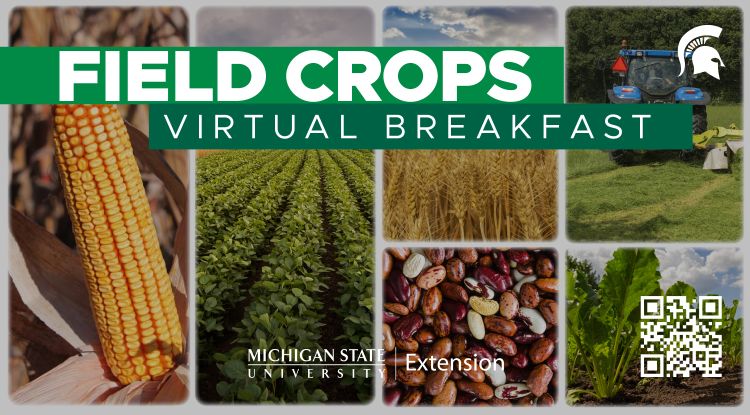.jpg?language_id=1)
Dry bean management: Data driven decisions, presented by Scott Bales, was the topic for the MSU Extension Field Crops Virtual Breakfast this week. Variety selection, planting date, planting conditions and in-season management decisions are all key factors for dry bean yield.
Recordings of this and all the Virtual Breakfast meetings are closed-captioned and available at the Field Crops Virtual Breakfast webpage and the MSU Extension Field Crops Team social media platforms: Facebook, Spotify, YouTube, Apple Podcasts and Twitter/X.
This work is supported by the Crop Protection and Pest Management Program [grant no 2024-70006-43569] from the USDA National Institute of Food and Agriculture. Any opinions, findings, conclusions, or recommendations expressed in this publication are those of the author(s) and do not necessarily reflect the view of the U.S. Department of Agriculture.



 Print
Print Email
Email